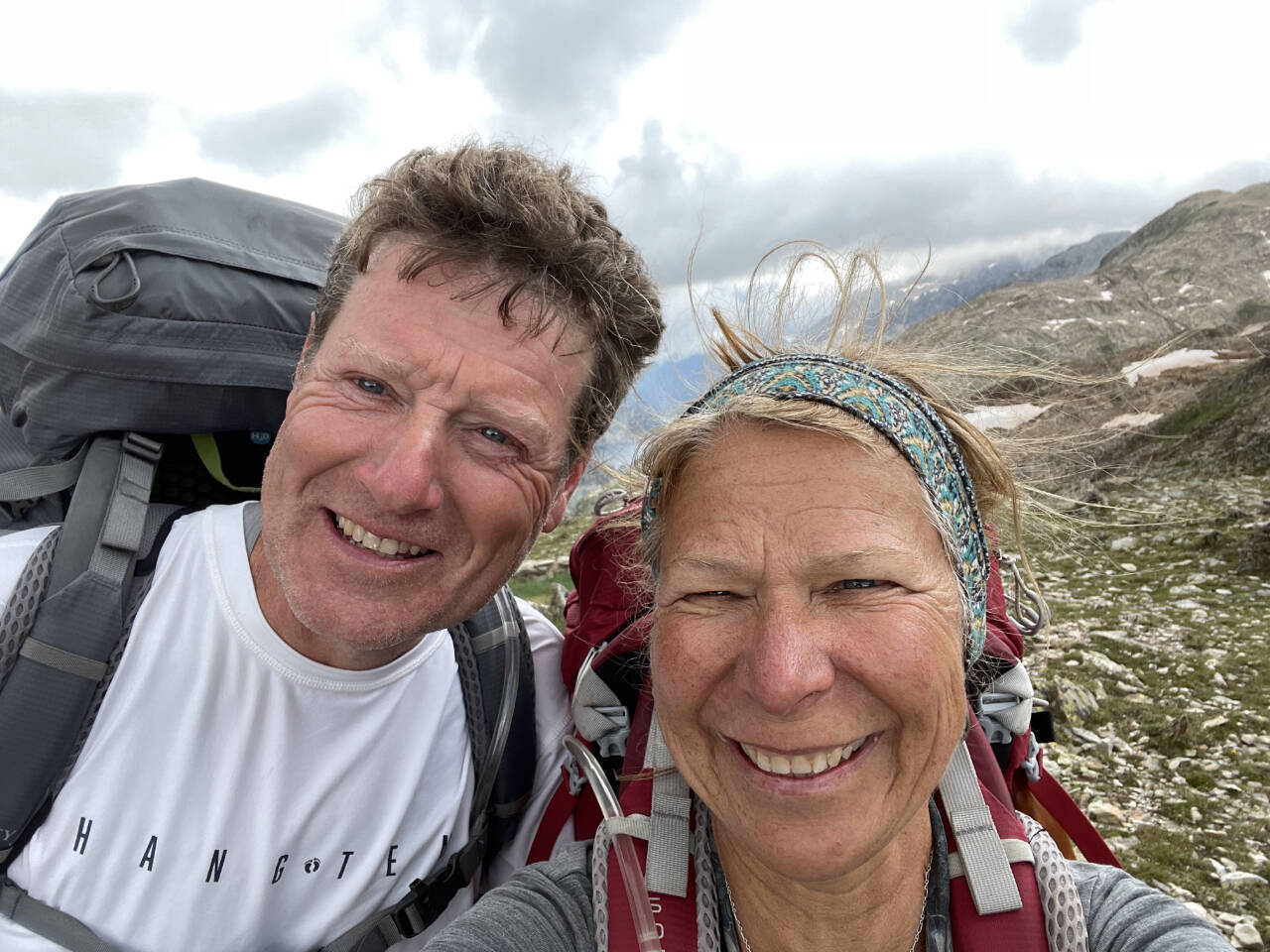The global pandemic radically changes all our lives, in both positive and negative ways. It shrunk our lives down to staying safe individually while being aware of our inter-connectedness. For those of us with an itch to explore distant horizons, travel was put on hold.
That did not stop us from dreaming of faraway places like the Pyrenees, a wild chain of mountains straddling the border between Spain and France, bookends by the Atlantic Ocean and Mediterranean Sea.
I am drawn to wild places and the interface of people and their environment, having spent over 40 years working to understand and protect special places.
I read about a high route traversing the most spectacular sections of the Pyrenees Mountains, comparable to the rugged beauty of the Sierras High Route which I knew well from previous adventures. I was intrigued, and mentally added it to my global travel bucket list for when the world reopened.
In summer 2022, we felt it was safe to travel to Spain and Portugal to explore one of the five major sections of the Pyrenees High Route. We were intrigued by the promise of seeing Pyrenees marmots and endemic plants, geology that changes with each valley, and a chain of mountain refugios, or huts, where one could get a delicious meal and glass of wine after a long day of hiking … or go “wild” and bivouac camp along the route at a spot of your own choosing.
The region has a fascinating and long history of human occupation influencing European history. Today one can experience firsthand the unique and vibrant Basque culture nestled within these mountains. It is different from our wilderness areas where people are often excluded.
Beginning in the mountain village of Lescun, France, we traveled for nine days and more than 100 miles through the Pyrenees National Park, ending in the charming town of Gavernie, hopscotching back and forth across the French and Spanish borders, climbing an endless number of “cols” or passes, never in a straight line.
We hope by sharing our adventure others will be inspired to explore the Pyrenees or other long-distance trails in Europe.
About the presenters
Adam Henley indulges in his love of wood by building custom homes and restoring specialty yachts in Port Townsend. He is a lifelong sailor and avid cyclist. After a 40-year hiatus, he was recently reintroduced to hiking and backpacking in the Olympic Mountains and far-flung places.
Carol Bernthal is redefining herself after a 40-year career in marine conservation and natural resource management, including serving as the superintendent of Olympic Coast National Marine Sanctuary. She is an enthusiastic and curious traveler to wild places in remote locations. At home in Port Townsend, Carol can be found climbing mountains, kayaking coastal waters and volunteering on community service projects.
About the series
Traveler’s Journal, a presentation of the Peninsula Trails Coalition, raises funds to buy project supplies and food for volunteers working on Olympic Discovery Trail projects. Shows start at 7 p.m. at the Dungeness River Nature Center, 1943 W. Hendrickson Road.
Admission is a suggested donation of $5 for adults. Attendees are encouraged, but not required, to wear mask.
For more information, email Arvo Johnson at amjcgj@gmail.com.
2023 Traveler’s Journal Series
When: 7 p.m., Thursday, March 23 (door opens at 6:30 p.m.)
Presenter: Carol Bernthal and Adam Henley
Presentation: “Will there be refreshments? Hiking the Pyrenees High Route”
Where: Dungeness River Nature Center, 1943 W. Hendrickson Road
Cost: Suggested $5 donation (adults)
Coming up: “Cycling around the world with children” with Paula and Lorenz Eber, March 30 (final presentation of 2023 series)



